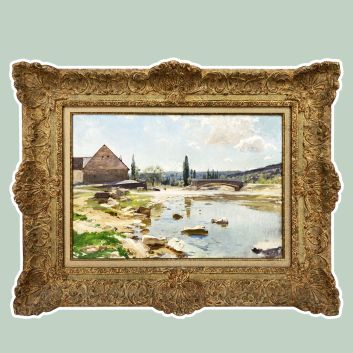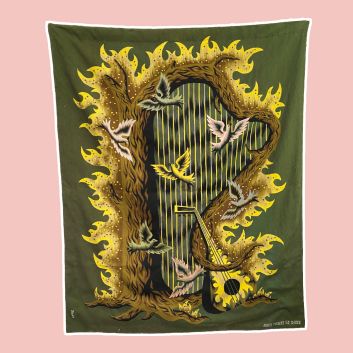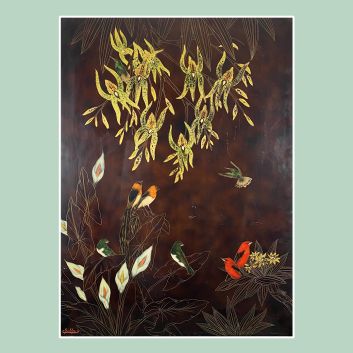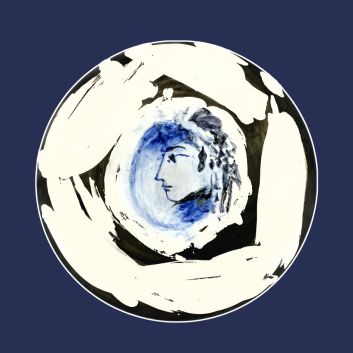Rating and value of Jean Cocteau's works, paintings and drawings

If you own a work by or based on the artist Jean Cocteau and would like to know its value, our state-approved experts and auctioneers can help you.
Our specialists will carry out a free appraisal of your work, and provide you with a precise estimate of its current market value.
Then, if you want to sell your work, we'll point you in the right direction to get the best possible price for it.
Artist's rating and value
A major artist of the 20th century, Jean Cocteau was already widely recognized during his lifetime. On today's art market, his works are highly valued and on the rise.
His oil paintings are among the most sought-after items for collectors. A work by Cocteau can fetch tens of millions of euros at auction.
His ink on paper Opium was sold for €622,050 in 2012, whereas it was estimated at between €33,180 and €49,760.
Order of value from the most basic to the most prestigious
Technique used | Results |
|---|---|
From €10 to €29,150 | |
Tapestry | From €350 to €14,480 |
Ceramics | From €50 to €38,000 |
Paint | From €70 to €123,480 |
Sculpture - volume | From €35 to €266,780 |
Drawing - watercolor | From €50 to €622,050 |
Response in less than 24h
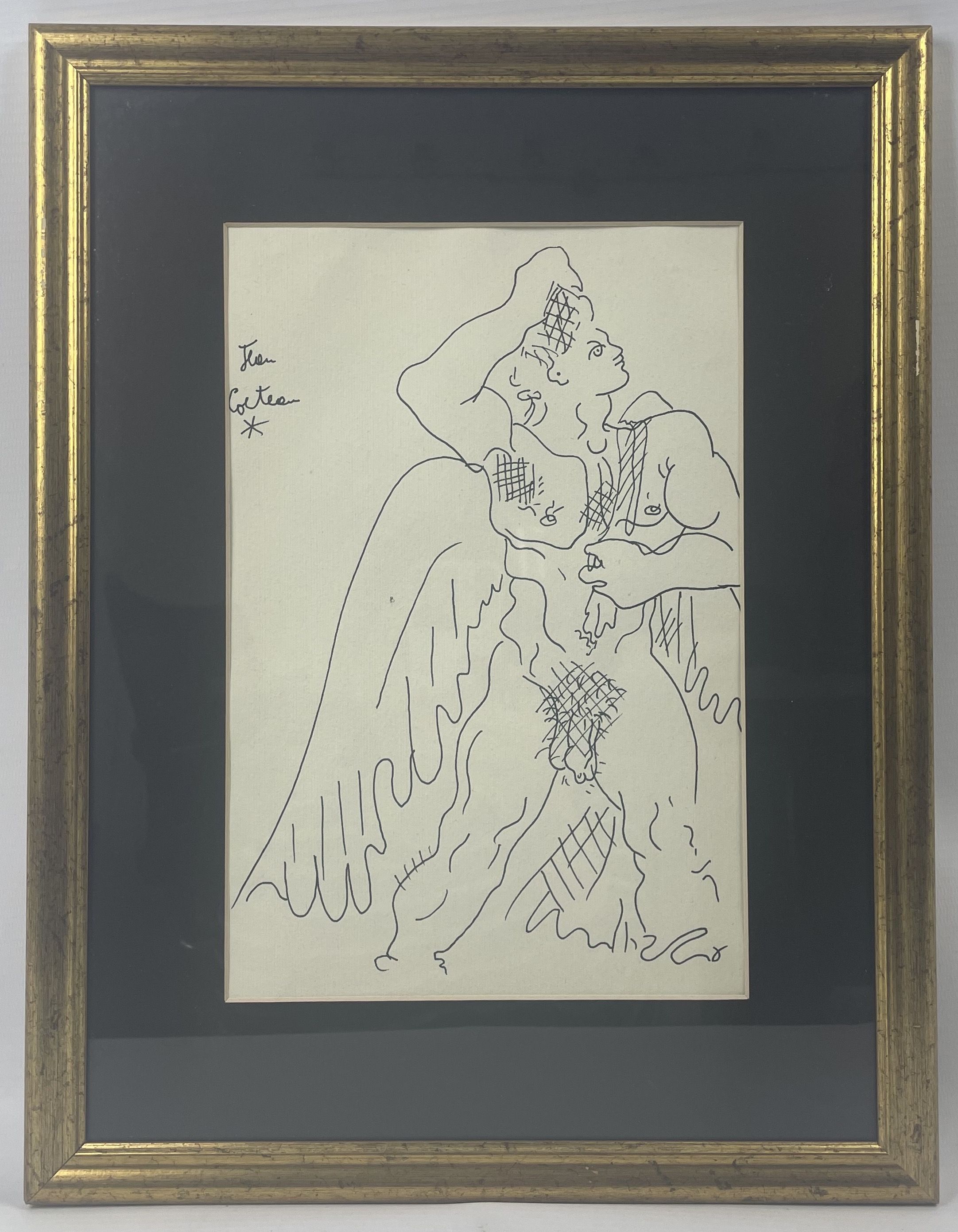
Artist's style and technique
Jean Cocteau is a versatile artist. He fuses painting, drawing, drama and poetry to create a comprehensive body of work that represents him. His simple lines and uncluttered style mark his works, whether drawings or plays.
Each element of his work seems to respond to the other, forming a continuum between his various artistic expressions. He is a major figure of the 20th century, appreciated by the general public and connoisseurs alike.
Recognition of Jean Cocteau is not limited to admiration alone: his standing on the art market remains very high. His works, sought after by collectors, regularly fetch high prices at auction.
This success reflects the continuing interest in his work and his ability to reach a wide audience.
Today, private collectors play a crucial role in the conservation of his material works, which they cherish and preserve.
However, some of his creations are also exhibited in museums around the world, ensuring permanent visibility and giving a wide audience access to his unique universe. In this way, Cocteau remains an essential reference, whose influence continues to mark the modern art scene.
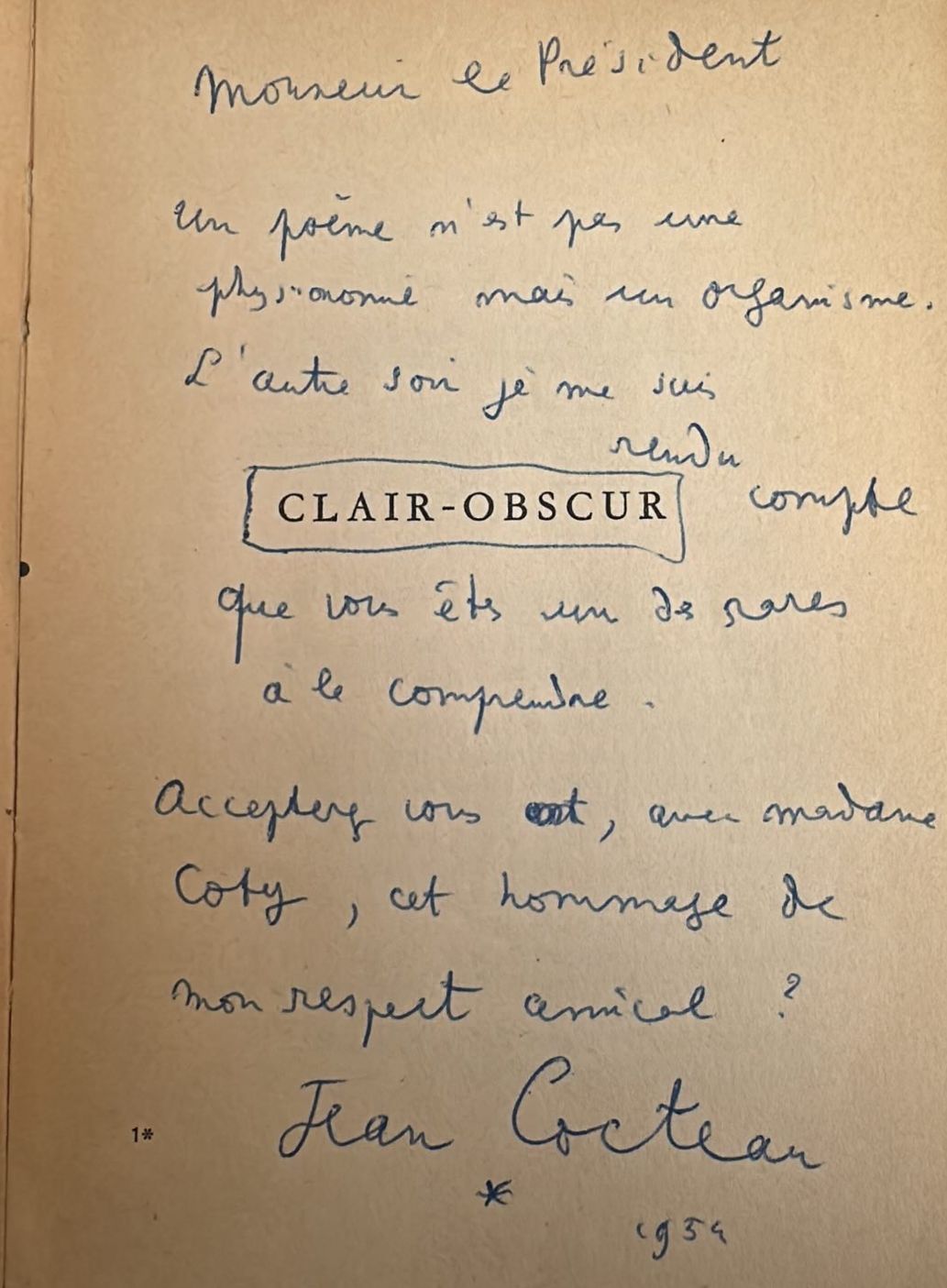
The life of Jean Cocteau
Clément Eugène Jean Maurice Cocteau was born in Maisons-Laffitte in 1889, into a family where art held a special place. His father, a lawyer by profession but an amateur painter, instilled in him a taste for artistic creation.
Surrounded by relatives who collected works of art, and under the influence of his mother, he developed an early curiosity for various forms of artistic representation, with a particular interest in theater. However, his childhood was marked by a profound tragedy: at the age of nine, he lost his father to suicide. This tragic event left an indelible mark on him.
At the age of fifteen, Cocteau went to study at the Lycée Condorcet in Paris. However, his unruly behavior got him expelled, and he failed his baccalaureate twice.
His rebellious youth, however, did not prevent him from quickly being taken under the wing of the actor Édouard de Max, who introduced him to the influential circles of the artistic world. It was at this time that he published his first collection of poems, earning the nickname "Prince Frivole".
He frequented literary salons, notably that of Anna de Noailles, where he befriended Maurice Barrès, a central figure of the period.
Cocteau also drew closer to the pictorial avant-gardes, notably the Cubists and Futurists, while developing ties with Russian artists such as Léon Bakstbut was also close to controversial artists such as Arno Breker.
These encounters opened the door to prestigious collaborations, such as his participation in the ballets Le Dieu bleu and Parade, projects in which he collaborated with Pablo Picasso and Erik Satie. His artistic career took on an international dimension.
Through his multiple talents, he produced a variety of works: drawings, prints, ceramics, while pursuing his career as a writer and playwright. In 1955, his talent was recognized by his election to the Académie Française. Jean Cocteau died in 1963, leaving behind a prolific body of work that continues to inspire.
10 things you need to know about Jean Cocteau
Focus on the stained glass windows in Saint Maximin church
The stained glass windows in Metz's Saint-Maximin church, designed by Jean Cocteau, embody both the artist's artistic mastery and poetic sensibility.
Created in the 1960s, these works of art are part of a singular project: Cocteau, whose work already extended to theater, poetry, painting and cinema, has here the opportunity to confront a medium new to him, that of stained glass. With these creations, he succeeds in making his mark while respecting the spirit of the place.
Cocteau was not a master glassmaker by training, but that didn't stop him from creating a work of great finesse. For the church of Saint-Maximin, he chose a sober, uncluttered style, perfectly in tune with the spiritual atmosphere of the building.
The simple lines and pure forms that characterize his work in other disciplines are found here, giving the stained-glass windows an almost dreamlike lightness. Soft colors and delicate lines bring a subdued light to the interior of the church, creating an atmosphere conducive to contemplation.
The themes of the stained glass windows are in perfect harmony with Cocteau's symbolic universe. Biblical figures, but also mythological references, blend the sacred with the poetic imagination dear to the artist.
Christ, angels and saints are depicted with a simplicity that lends the figures an almost supernatural aura. Cocteau does not seek to reproduce reality; he prefers to suggest and evoke, leaving room for interpretation and reverie. It's this ability to combine mysticism and modernity that makes his stained glass so captivating.
One of the most striking aspects of these stained-glass windows is their use of color. Unlike more traditional stained glass, where bright, contrasting hues dominate, Cocteau opts here for more subtle colors.
Blues and greens, combined with a few touches of yellow, diffuse a soft, soothing light, in perfect symbiosis with the church's quietude. This chromatic choice gives the stained glass windows a meditative aspect, reinforcing the impression that these works are both windows to the divine and reflections of the human soul.
The lines of the figures are typically Coctalian. The lines are pure, sometimes bordering on the abstract, but always expressive. The faces, often reduced to a few simple strokes, nevertheless manage to convey a palpable emotion.
There's an economy of means in these stained-glass windows reminiscent of Cocteau's poetry, where every word and image is carefully chosen for its evocative power.
Metz's Saint-Maximin church itself is the perfect setting for these creations. Built in the 15th century, its late Gothic architecture contrasts with the modernity of Cocteau's stained glass windows.
This dialogue between old and new further enhances the effect of the works: they seem to integrate naturally into the space, while adding a resolutely contemporary touch.
Finally, these stained glass windows bear witness to Jean Cocteau's deeply spiritual vision. Although not religious in the strict sense, he was always fascinated by the mysteries of existence, the questions of life, death and the sacred.
These themes run through all his work, and are magnified here by the light that shines through the glass. Each ray of sunlight seems to bring a new dimension to the stained glass, changing its appearance as the hours and seasons pass.
To sum up, the stained glass windows in Metz's Saint-Maximin church, designed by Jean Cocteau, are both sober and profound, reflecting the artistic and spiritual sensibility of their creator. They constitute a unique visual legacy, where the poetry of shapes and colors sublimates the sacred space, inviting contemplation and reflection.
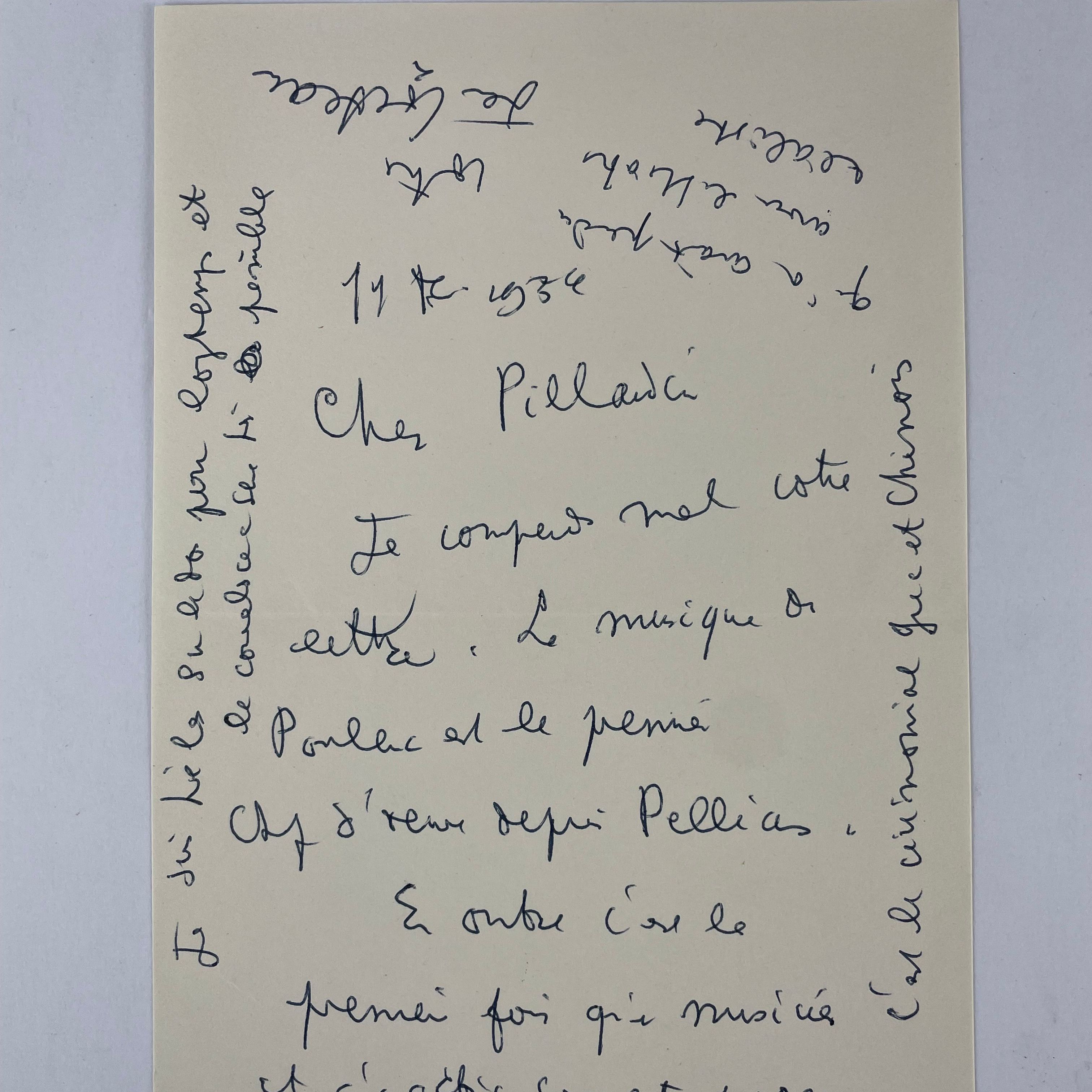
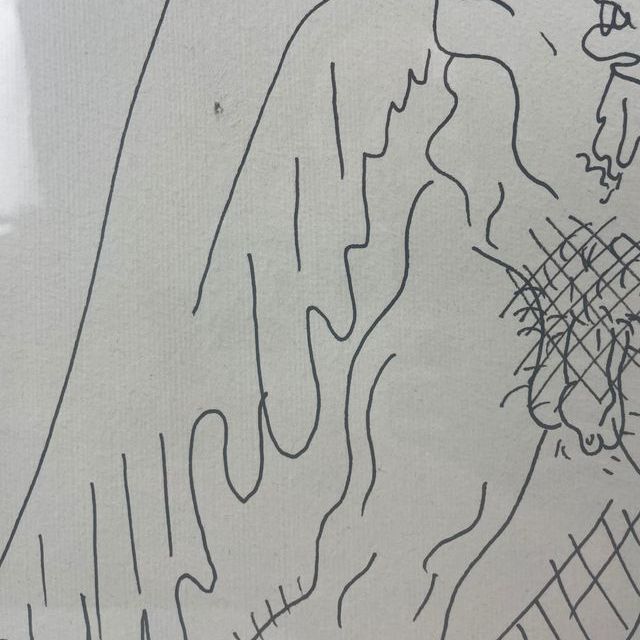
The success of Jean Cocteau's drawings on the auction market
Jean Cocteau's drawings have met with remarkable success at auction, attesting to the artist's pre-eminent position in the art market.
Although Cocteau is best known for his versatility, his graphic work, particularly his drawings, is widely recognized among collectors and art lovers.
These works, often created with disconcerting simplicity, captivate with their elegance and ability to evoke deep emotions through a few clean lines.
The success of Cocteau's drawings is partly due to their instantly recognizable character. With simple, almost minimalist strokes, he succeeds in creating figures full of life, movement and expressiveness.
This economy of means, which has become a trademark, appeals to collectors looking for works that are both modern and timeless. His portraits, often reduced to clean, fluid contours, exude an intensity and depth that transcend technique.
At auction, these drawings regularly fetch substantial sums. This phenomenon is explained by buyers' attraction to works by artists who left their mark on their era.
Cocteau, with his unique style and central position in the artistic milieu of the 20th century, continues to attract attention even decades after his death. His drawings, less expensive than his more imposing pieces or paintings, represent an accessible gateway for those wishing to own a work by the artist.
Cocteau's poetic universe, present in his graphic works, also plays a key role in this success. His drawings, often accompanied by captions or evocative titles, transport viewers into a world where the imaginary takes precedence over reality.
This intimate link between drawing and poetry enables his creations to reach a wide audience, from art lovers to seasoned collectors.
His signature
Not all Jean Cocteau's works are signed.
Although there are variations, here is a first example of its signature:
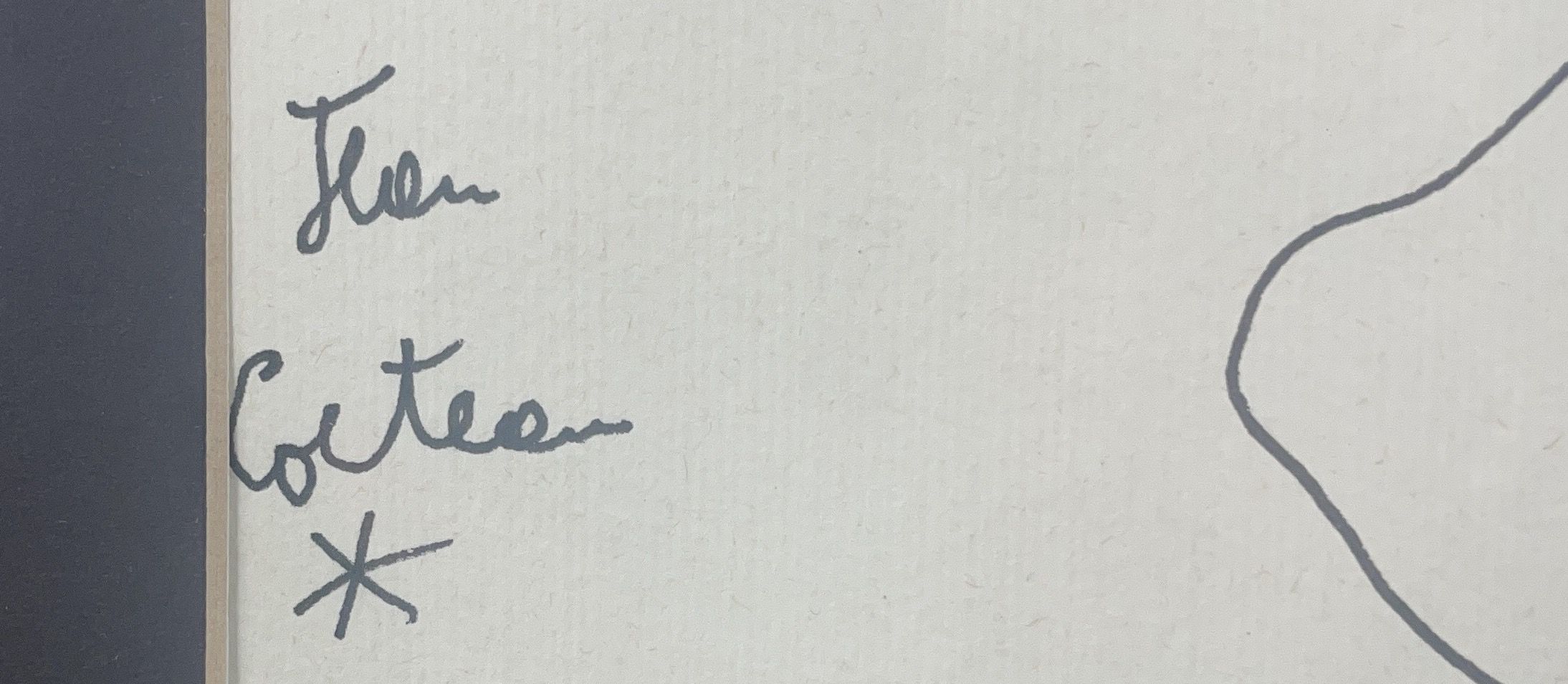
Our team will be happy to help you identify your artwork.
Appraising your property
If you own a work by Jean Cocteau, don't hesitate to request a free appraisal by filling in our online form.
A member of our team of experts and certified auctioneers will contact you to provide an estimate of the market value of your work.
If you're thinking of selling your work, our specialists will also guide you through the various alternatives available to obtain the best possible price, taking into account market trends and the specific features of each item.
Response in less than 24h
Related topics
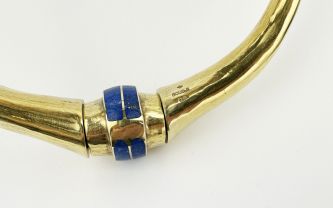
Rating and value of Goudji's works, sculptures and jewelry
Goudji, goldsmith and unusual sculptor of the XXth century, handles the arts of fire and creates an enchanting universe, highly prized in auctions.
Read more >
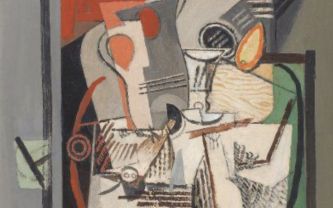
Rating and value of works, drawings, paintings by Louis Marc...
Louis Marcoussis is a 20th-century Cubist painter whose drawings and oils on canvas are highly prized at auction.
Read more >

Rating and value of paintings by Valerius d...
Valerius de Saedeleer is a Belgian Expressionist painter who produced works of high value. 24h estimate.
Read more >
Secure site, anonymity preserved
State-approved auctioneer and expert
Free, certified estimates
